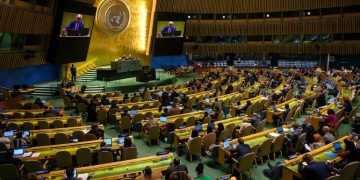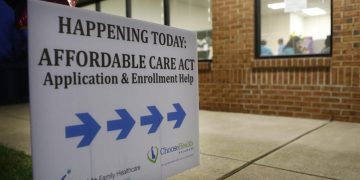The Marriner S. Eccles Federal Reserve building in Washington.
Stefani Reynolds/Bloomberg via Getty Images
If everything goes according to plan, the Federal Reserve in a little over two months will enact its first rate increase in three years, a move policymakers deem necessary and that markets and the economy are grudgingly coming to accept.
The Fed last raised rates in late 2018, part of a “normalization” process that happened in the waning period of the longest-lasting economic expansion in U.S. history.
Just seven months later, the central bank retreated as the expansion looked increasingly fragile. Eight months after that initial cut in July 2019, the Fed was forced to roll back its benchmark borrowing rate all the way to zero as the nation confronted a pandemic that threw the global economy into a sudden and shocking tailspin.
So as officials prep for a return to more conventional monetary policy, Wall Street is watching closely. The first trading day of the new year indicated the market is willing to keep pushing higher, in the midst of the gyrations that have greeted the Fed since it indicated a policy pivot a month ago.
“When you look back historically on the Fed, it’s usually multiple tightenings before you get in trouble with the economy and the markets,” said Jim Paulsen, chief investment strategist at the Leuthold Group.
Paulsen expects the market to take the initial hike – likely to be enacted at the March 15-16 meeting – without too…



























































